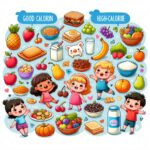When it comes to nourishing your little ones, choosing whole grains for baby and toddler meals is a pivotal step towards laying the foundation for a healthy diet. Whole grains are packed with nutrients essential for growth and development, making them an excellent choice for your child’s meals. In this guide, we’ll explore the importance of whole grains and provide practical tips on how to seamlessly integrate them into your baby and toddler’s diet.
Why Whole Grains Matter for Babies and Toddlers
Whole grains are rich in fiber, vitamins, and minerals, offering numerous health benefits for growing children. They support digestive health, provide sustained energy, and can even help prevent chronic diseases later in life. By choosing whole grains for baby and toddler meals, you’re not only catering to their nutritional needs but also instilling healthy eating habits from an early age.
Integrating whole grains into your child’s diet is easier than you might think. From the traditional oatmeal to innovative quinoa-based dishes, the variety of whole grains available provides a plethora of options to suit even the pickiest eaters. It’s essential to introduce these grains early on, as they can help shape your child’s palate and acceptance of different textures and flavors. ChooseMyPlate recommends making at least half of your grains whole grains, a guideline that also applies to young children.
Choosing Whole Grains for Baby and Toddler Meals
When starting your journey of choosing whole grains for baby and toddler meals, it’s crucial to consider the right types of grains and the best methods of preparation. Whole grains like oats, barley, and brown rice are excellent starting points due to their mild flavors and versatile nature. Preparing these grains in a soft, easy-to-digest form, such as porridge or soft-cooked rice, can make them more appealing to your little one.
Moreover, creativity in the kitchen can go a long way in making whole grains a staple in your child’s diet. Incorporating whole grains into familiar dishes, like blending cooked quinoa into fruit purees or adding barley to vegetable soups, can make these nutritious grains more acceptable to young taste buds. Always ensure that the grains are cooked well and served in age-appropriate, safe sizes to prevent choking hazards.
Incorporating Whole Grains into Daily Meals
Creating a meal plan that includes a variety of whole grains can help ensure your child is getting the full spectrum of nutrients these grains have to offer. Breakfast options like whole grain pancakes or waffles, lunch ideas such as quinoa salad or whole wheat pasta, and dinner solutions including brown rice casseroles are just a few ways to choose whole grains for baby and toddler meals throughout the day.
To further enrich your child’s diet with whole grains, consider snacks that incorporate these nutritious options. Whole grain muffins, rice cakes, or oat-based cookies can be excellent snack choices that are both healthy and appealing to toddlers and older babies. Remember, transitioning to whole grains should be a gradual process, allowing your child’s digestive system to adapt to the increased fiber intake.
In conclusion, choosing whole grains for baby and toddler meals is a significant step towards promoting a balanced and nutritious diet. By introducing a variety of whole grains early on and incorporating them creatively into meals and snacks, you can help ensure your child benefits from the numerous health advantages these grains offer. With a little planning and culinary creativity, whole grains can become a beloved part of your family’s mealtime routine.













